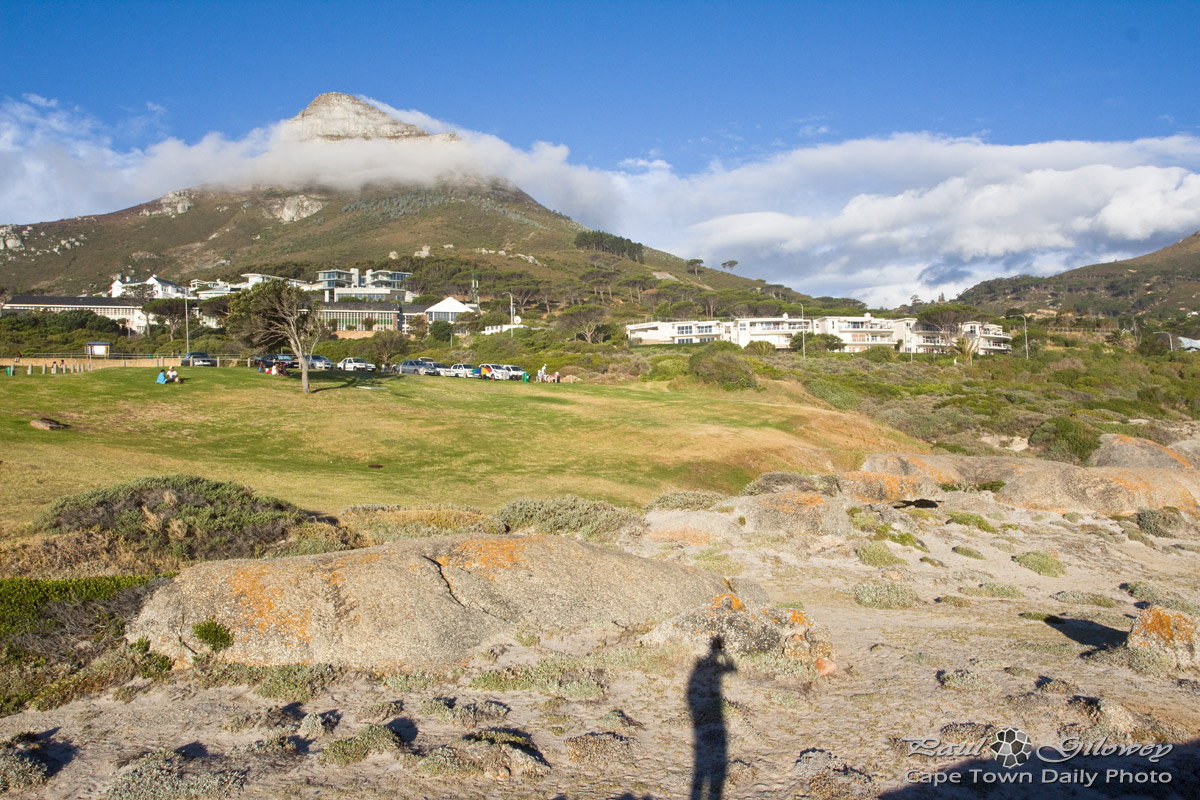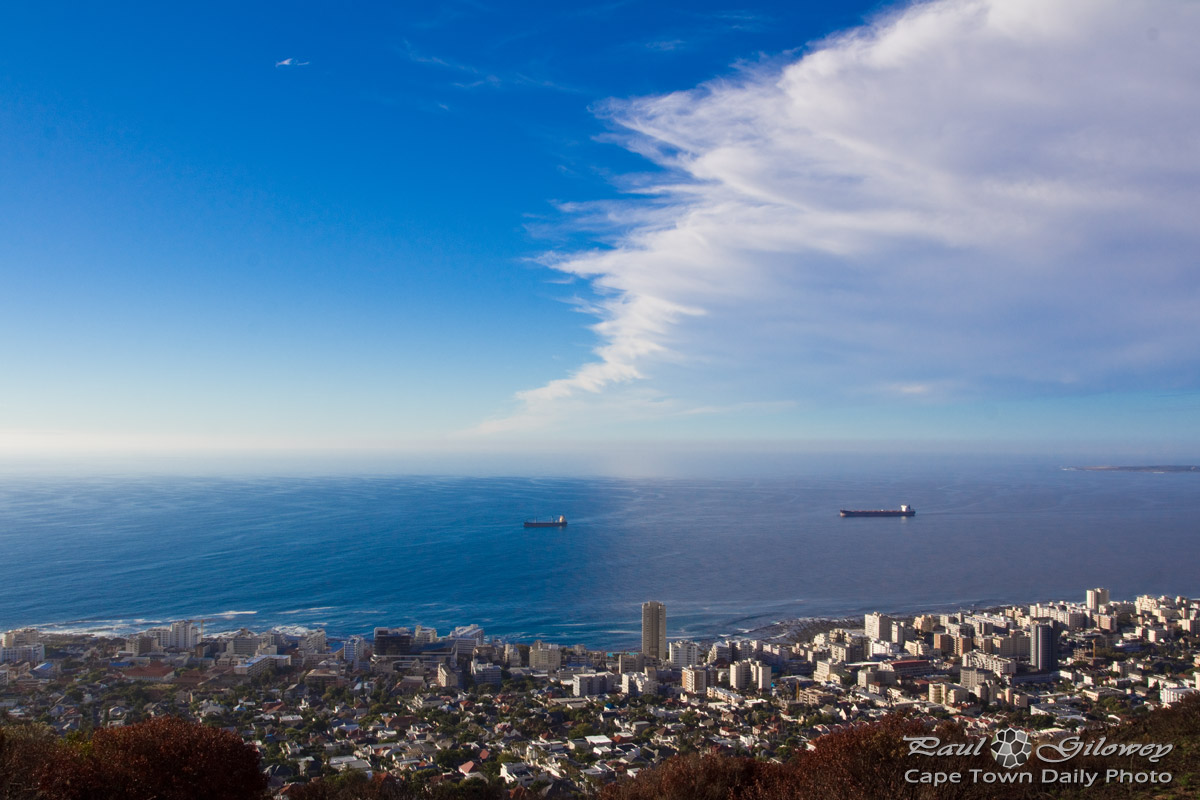Tag Archives: clouds
Encroaching cloud – a view from Lion’s Head
How Table Mountain’s tablecloth works

What happens is that a warm south-easterly wind blows up the back of the Table Mountain range, until it reaches the summit (which is about 1000m above sea level) where it quickly cools down as it meets the cold air covering the top of the mountain. Because cool air isn't able to hold as much moisture, condensation and a thick cloud results.
The air continues to move towards Cape Town and Table Bay, and as it falls off the edge of the mountain it descends, meeting warmer air that's able to absorb the cloud's water vapour, making the cloud disappear, literally into thin air. :)
Enchanting clouds

If you visit Cape Town, and if the weather's right, you'll see a similar blanket of cloud covering the mountain. The weird and enchanting thing about the clouds is that they continuously descend from the mountain towards the earth but never seem to reach it. They billow over, almost like you'd imagine a witch's cauldron would. It's quite enchanting.
The crackling of power lines

Most of Cape Town's electricity is supplied by the two nuclear reactors at Eskom's Koeberg power station (map), located just outside of the coastal town of Melkbos. One of the reactors was shut down on 28 October for repairs - which effectively halved the station's power output causing the Western Cape to rely more heavily on power from the coal-based power from the Johannesburg area. After being down for more than a month Eskom recently announced that it had fired up the second reactor after successfully concluding repairs.
The use of nuclear power has been hotly contested for many years, and the recent disaster in Japan gave rise to even more concern over the proximity of the nuclear power station to Cape Town. I'm sure that in the possibly-unlikely event a disaster at the plant we'd all regret not getting rid of the nuclear power station years ago, but on the other hand I can't help but wonder of the amount of pollution released by coal-based power-plants warrants the relatively small risk. What do you think?
Overlooking Paarl

Another thing that the town will always be remembered for is that it hosts the old Victor Verster Correctional Centre - the prison where Nelson Mandela was held before his release in 1992.
I remember the day that he was release - it was the day that our family was returning from our holiday in Wellington (a nearby town). I vividly remember how the national highway was lined with thousands of ANC supporters - awaiting the release of their beloved Madiba. I remember it being both exiting and scary to be in the midst of the thronging crowds. I won't forget that day.
Power outages and load-shedding

Seeing this picture reminded me how load-shedding seems to (at least for now) be a thing of the past. This year I recall having only a single outage lasting a couple of hours - but then, I suspect that was an unplanned outage. :) Our friends up north may not have been so lucky unfortunately.
Although I haven't heard confirmed news of load-shedding in Gauteng I've heard rumblings of outages and found these load-shedding schedules on Eskom's site.
Church and steeple

I'm not completely sure, but normally churches like this are of the Dutch Reformed variety - there really is at least one in every town, and they normally stand out like a sore thumb with their tall steeples. When I lived with my parents I remember often waking up on a Sunday morning and hearing the church bells ring, calling the congregation to their gathering.
A beautiful landscape

Colourful vineyards, green fields, blue mountains, and billowing clouds. The late afternoon sun makes this such a beautiful landscape. I wonder if people living here ever become jaded towards its beauty.
The vineyards are orange

This is a closer view of the vineyards shown in yesterday's post about graffiti. Many vines in vineyards over Cape Town have already lost their leaves, but like this one, some still have a beautiful red/orange hue.
The narrow road, not often travelled

I first walked among the graves at Stellenbosch cemetery, taking photos, but later discovered that this little road wasn't only for official use, but was made for visitors to drive along - presumably because many people aren't able to walk the steep incline to see the graves of their loved ones.
I hopped in my car and took a drive through the graveyard - it was a little eerie, I have to admit.

